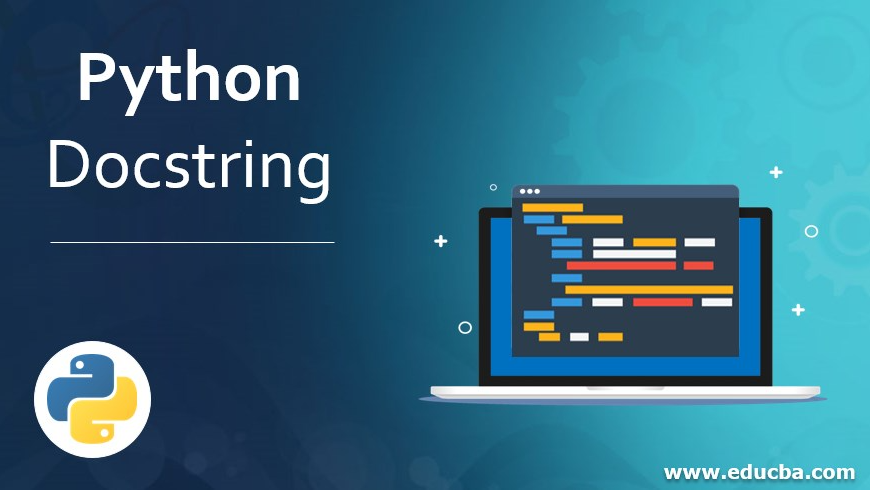全网最详细中英文ChatGPT-GPT-4示例文档-智能编写Python注释文档字符串从0到1快速入门——官网推荐的48种最佳应用场景(附python/node.js/curl命令源代码,小白也能学)

ChatGPT是目前最先进的AI聊天机器人,它能够理解图片和文字,生成流畅和有趣的回答。如果你想跟上AI时代的潮流,你一定要学会使用ChatGPT。如果你想了解OpenAI最新发布的GPT-4模型,以及它如何为ChatGPT聊天机器人带来更强大的功能,那么你一定不要错过OpenAI官网推荐的48种最佳应用场景,不管你是资深开发者、初学者,你都能够从0到1快速入门,并掌握他们。
在这个AI大时代,如果不想被人颠覆,就要先颠覆别人。如果你颠覆不了别人,那你就努力运用ChatGPT提高你的技术水平和创造力。
如果要给一个python函数写高质量的文档字符串,程序员不仅要需要在文档字符串中描述函数的参数和返回值,并使用相应的标签(例如Args,Returns,Raises)来提升可读性,还需要注意相关的语法规则和格式。而ChatGPT的智能注释文档生成功能,能帮助程序员智能创建注释文档字符串,极大地提高了python函数注释效率。
Introduce 简介
Write a Python docstring 编写Python文档字符串
An example of how to create a docstring for a given Python function. We specify the Python version, paste in the code, and then ask within a comment for a docstring, and give a characteristic beginning of a docstring (""").
这是一个如何为给定的Python函数创建注释文档字符串的示例。我们指定Python版本,粘贴到代码中,然后在注释中请求一个文档字符串,并给予一个文档字符串的特征开头(""")。
setting 设置
Engine: text-davinci-003
Max tokens:150
Temperature:0
Top p:1.0
Frequency penalty:0.0
Presence penalty:0.0
Stop sequence:# """
说明:
0、Engine设置定义了你要使用的模型,例如 text-davinci-003是一个文本生成模型。这种模型可以根据输入的文本,生成新的、相关的文本。
1、Max tokens是指在请求中最多允许返回的 token 数目,比如你可以指定 chatGPT 返回最多60个 token。这可以帮助你控制输出的内容大小,以便更好地控制响应速度和结果。一般1个token约4个字符或者0.75个单词
2、Temperature是一个参数,用于控制 chatGPT 的输出。它决定了 chatGPT 在生成文本时会多么“随意”。值越高,chatGPT 生成的文本就越不可预测;值越低,chatGPT 生成的文本就越可预测。它在0.0到2.0之间,Temperature设置为0意味着ChatGPT将会生成更加保守的回复,即更少的随机性和更多的准确性,这可以帮助你在聊天中更好地控制语义,并且可以防止ChatGPT产生不相关的内容。通常建议更改此值或Top P,但不要同时更改这两个值。
3、Top p是随温度采样的替代方案,称为核采样,其中模型考虑具有top_p概率质量的标记的结果。因此0.1意味着仅考虑包括前10%概率质量的记号。通常建议更改此值或temperature,但不要同时更改这两个值。
4、Frequency penalty是指在训练时,模型会根据词频来调整每个单词的重要性。它可以帮助模型更好地理解文本,并减少过拟合。介于-2.0和2.0之间的数字。正值会根据新标记在文本中的现有频率惩罚新标记,从而降低模型逐字重复同一行的可能性。Frequency penalty设置为0意味着模型不会对重复的词进行惩罚。它可以帮助模型生成更多的新词,而不是重复使用已有的词。
5、Presence penalty是指在ChatGPT中,一些预先定义的条件或者状态可能会影响机器人回答的质量,介于-2.0和2.0之间的数字。正值会根据新标记到目前为止是否出现在文本中来惩罚它们,从而增加模型谈论新主题的可能性。如果将 Presence penalty 设置为 0,则表示不会有任何惩罚。
6、Stop sequence是一种设置,通过它可以确定你的聊天会话的结束标志。当你在 ChatGPT中设置 Stop sequence为#"""时,表示你的聊天会话结束标志是注释符#"""。
Prompt 提示
# Python 3.7
def randomly_split_dataset(folder, filename, split_ratio=[0.8, 0.2]):
df = pd.read_json(folder + filename, lines=True)
train_name, test_name = "train.jsonl", "test.jsonl"
df_train, df_test = train_test_split(df, test_size=split_ratio[1], random_state=42)
df_train.to_json(folder + train_name, orient='records', lines=True)
df_test.to_json(folder + test_name, orient='records', lines=True)
randomly_split_dataset('finetune_data/', 'dataset.jsonl')
# An elaborate, high quality docstring for the above function: 用于上述函数的详尽高质量文档字符串
"""
Sample response 回复样本
""" This function randomly splits a dataset into two parts, a training set and a test set, according to a given split ratio.
Parameters:
folder (str): The path to the folder containing the dataset.
filename (str): The name of the dataset file.
split_ratio (list): A list of two floats representing the ratio of the training set and the test set.
Returns:
None
"""
"""此函数根据给定的拆分比率将数据集随机拆分为两个部分:训练集和测试集。
参数:
folder (str):包含数据集的文件夹的路径。
filename (str):数据集文件的名称。
split_ratio(list):一个由两个浮点数组成的列表,表示训练集和测试集的比率。
返回:
无
"""
API request 接口请求
python接口请求示例
import os
import openai
openai.api_key = os.getenv("OPENAI_API_KEY")
response = openai.Completion.create(
model="text-davinci-003",
prompt="# Python 3.7\n \ndef randomly_split_dataset(folder, filename, split_ratio=[0.8, 0.2]):\n df = pd.read_json(folder + filename, lines=True)\n train_name, test_name = \"train.jsonl\", \"test.jsonl\"\n df_train, df_test = train_test_split(df, test_size=split_ratio[1], random_state=42)\n df_train.to_json(folder + train_name, orient='records', lines=True)\n df_test.to_json(folder + test_name, orient='records', lines=True)\nrandomly_split_dataset('finetune_data/', 'dataset.jsonl')\n \n# An elaborate, high quality docstring for the above function:\n\"\"\"",
temperature=0,
max_tokens=150,
top_p=1.0,
frequency_penalty=0.0,
presence_penalty=0.0,
stop=["#", "\"\"\""]
)
node.js接口请求示例
const { Configuration, OpenAIApi } = require("openai");
const configuration = new Configuration({
apiKey: process.env.OPENAI_API_KEY,
});
const openai = new OpenAIApi(configuration);
const response = await openai.createCompletion({
model: "text-davinci-003",
prompt: "# Python 3.7\n \ndef randomly_split_dataset(folder, filename, split_ratio=[0.8, 0.2]):\n df = pd.read_json(folder + filename, lines=True)\n train_name, test_name = \"train.jsonl\", \"test.jsonl\"\n df_train, df_test = train_test_split(df, test_size=split_ratio[1], random_state=42)\n df_train.to_json(folder + train_name, orient='records', lines=True)\n df_test.to_json(folder + test_name, orient='records', lines=True)\nrandomly_split_dataset('finetune_data/', 'dataset.jsonl')\n \n# An elaborate, high quality docstring for the above function:\n\"\"\"",
temperature: 0,
max_tokens: 150,
top_p: 1.0,
frequency_penalty: 0.0,
presence_penalty: 0.0,
stop: ["#", "\"\"\""],
});
curl命令示例
curl https://api.openai.com/v1/completions \
-H "Content-Type: application/json" \
-H "Authorization: Bearer $OPENAI_API_KEY" \
-d '{
"model": "text-davinci-003",
"prompt": "# Python 3.7\n \ndef randomly_split_dataset(folder, filename, split_ratio=[0.8, 0.2]):\n df = pd.read_json(folder + filename, lines=True)\n train_name, test_name = \"train.jsonl\", \"test.jsonl\"\n df_train, df_test = train_test_split(df, test_size=split_ratio[1], random_state=42)\n df_train.to_json(folder + train_name, orient='records', lines=True)\n df_test.to_json(folder + test_name, orient='records', lines=True)\nrandomly_split_dataset('finetune_data/', 'dataset.jsonl')\n \n# An elaborate, high quality docstring for the above function:\n\"\"\"",
"temperature": 0,
"max_tokens": 150,
"top_p": 1.0,
"frequency_penalty": 0.0,
"presence_penalty": 0.0,
"stop": ["#", "\"\"\""]
}'
json格式示例
{
"model": "text-davinci-003",
"prompt": "# Python 3.7\n \ndef randomly_split_dataset(folder, filename, split_ratio=[0.8, 0.2]):\n df = pd.read_json(folder + filename, lines=True)\n train_name, test_name = \"train.jsonl\", \"test.jsonl\"\n df_train, df_test = train_test_split(df, test_size=split_ratio[1], random_state=42)\n df_train.to_json(folder + train_name, orient='records', lines=True)\n df_test.to_json(folder + test_name, orient='records', lines=True)\nrandomly_split_dataset('finetune_data/', 'dataset.jsonl')\n \n# An elaborate, high quality docstring for the above function:\n\"\"\"",
"temperature": 0,
"max_tokens": 150,
"top_p": 1.0,
"frequency_penalty": 0.0,
"presence_penalty": 0.0,
"stop": ["#", "\"\"\""]
}
其它资料下载
如果大家想继续了解人工智能相关学习路线和知识体系,欢迎大家翻阅我的另外一篇博客《重磅 | 完备的人工智能AI 学习——基础知识学习路线,所有资料免关注免套路直接网盘下载》
这篇博客参考了Github知名开源平台,AI技术平台以及相关领域专家:Datawhale,ApacheCN,AI有道和黄海广博士等约有近100G相关资料,希望能帮助到所有小伙伴们。


 如果要给一个python函数写高质量的文档字符串,程序员不仅要需要在文档字符串中描述函数的参数和返回值,并使用相应的标签(例如Args,Returns,Raises)来提升可读性,还需要注意相关的语法规则和格式。而ChatGPT的智能注释文档生成功能,能帮助程序员智能创建注释文档字符串,极大地提高了python函数注释效率。
如果要给一个python函数写高质量的文档字符串,程序员不仅要需要在文档字符串中描述函数的参数和返回值,并使用相应的标签(例如Args,Returns,Raises)来提升可读性,还需要注意相关的语法规则和格式。而ChatGPT的智能注释文档生成功能,能帮助程序员智能创建注释文档字符串,极大地提高了python函数注释效率。

 浙公网安备 33010602011771号
浙公网安备 33010602011771号